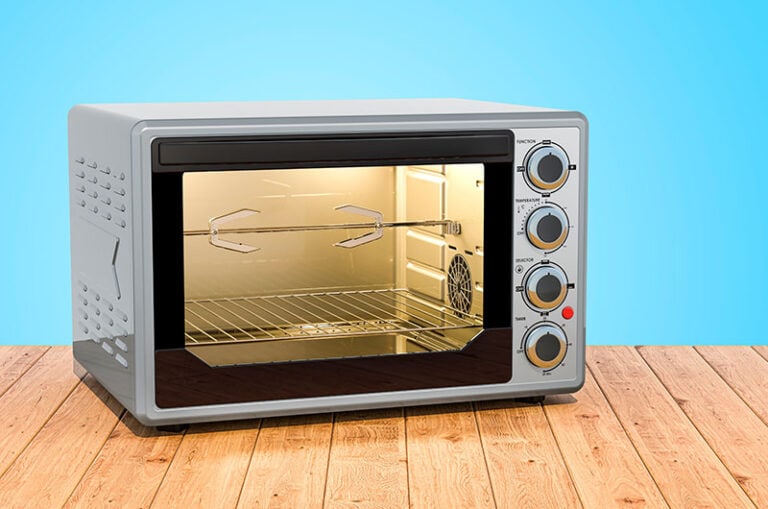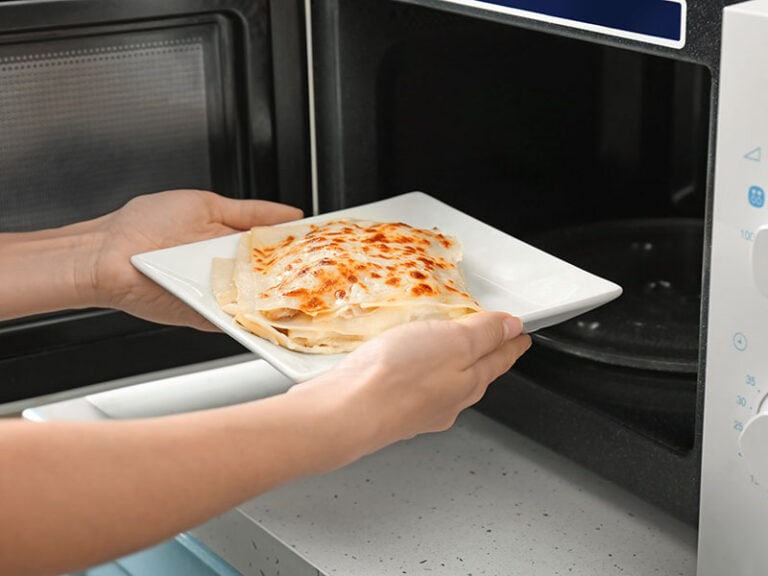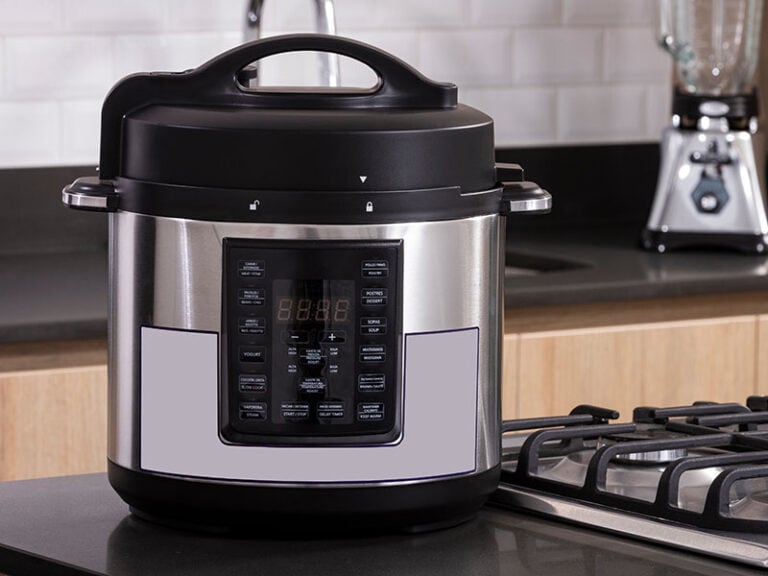
If you don’t fully understand how to reheat lasagna, things can turn out to be challenging and even dangerous. There’s a high chance that this wonderful dish will become extremely dry or end up being a rubbery mess!
I have experienced every way of cooking frozen lasagna and refrigerated ones and finally figured out the most optimal ways to reheat it. I’m confident that the techniques I introduce to you in this post are not only straightforward but can also lead to satisfying results.
Wait no more and let’s head into the article!
What Are Easy Methods To Reheat Lasagna?
Here are the 5 easy methods to rewarm your lasagna:
- In the Oven: This method requires the longest time but gives you the most pleasing results. Moreover, only in an oven can you reheat a whole lasagna at once!
- In the Toaster oven: The steps are similar to the oven, but they are easier and more convenient.
- In the Microwave: The quickest method to warm your lasagna up is here!
- In a Skillet: This method is only faster than the oven method. However, it provides you with top-quality lasagna.
- In an Air Fryer: This one is fast, straightforward, and demands less of your effort. However, you will need a loaf pan to guarantee the best result.
Below is the summary table of the time and methods to reheat lasagna according to your storage conditions.
What Should You Know Before Reheating Lasagna?

Lasagna is a mixture of pasta, cheese, tomato sauce, and other ingredients. If you know the proper ways to layer your lasagna, the pasta will absorb the liquid from the sauce and the melting cheese. Some people have said lasagna is surprisingly tastier the next day.
However, due to the absorbing process, if you reheat lasagna improperly, the pasta can turn out to be very dehydrated. There might be burned edges on your dish. Your lasagna is also likely to be messy because all the separate layers have been mixed together!
Therefore, it’s important to know how to warm lasagna up correctly to retain the moisture and tastiness of your dish.
In The Oven
After reheated appropriately in the oven, lasagne will deliver a magnificent taste with a wonderful appearance. Warming lasagna in the oven may need a lot of your time and patience, but believe me, it’s worth doing!
Refrigerated Lasagna
The high heat in the oven will slowly warm up your lasagna. Hence, not only can you bring it back to the state before refrigeration, but you can also warm up a whole lasagna at once!
What you will need:
- An oven-safe container/casserole dish
- Water/Marinara sauce
- Aluminum foil
- A food thermometer (highly recommended)
What you are going to do:
- Step 1: Preheat your oven to 350o Place the lasagna into an oven-safe container/casserole dish.
- Step 2: Drizzle a few tablespoons of water/marinara sauce all over the edges of your lasagna. The larger the portion of your lasagna is, the more water/marinara sauce you will need.
- Step 3: Cover the whole container/casserole dish with aluminum foil.
- Step 4: Set your timer. If you’re reheating multiple portions or a whole lasagna at a time, it will take you 30-45 minutes. If it’s a single serving, the time is approximately 20 minutes.
- Step 5: Put lasagna in the oven and wait.
- Step 6: By the time the timer runs up, your lasagna will be melty. Grab the thermometer and check if the inner temperature of the dish has reached 160-165oF yet.
- Step 7: If the lasagna has been heated all the way through and reached that particular range of temperature, it is ready to be served.

Frozen Lasagna
You may know all the required steps to freeze your lasagna. But reheating it from the frozen state is a bit tricky. You can rely on how to rewarm refrigerated lasagna in the oven since both of them are pretty much alike. However, you need to thaw your lasagna first.
There are two options for you when it comes to defrosting lasagna.
- Thaw it overnight in the fridge: If you have a lot of time ahead of eating your leftovers, you should opt for this method. Simply put your lasagna down in the fridge and let it thaw naturally overnight. Then continue to warm it up like a refrigerated one.
- Thaw it directly in the oven: If you are in a rush, put your frozen lasagna into the oven. Repeat the exact same steps of reheating refrigerated lasagna but increase the time a little bit. Set your timer 45-60 minutes and see how things turn out.
In The Toaster Oven
If using a toaster oven, your lasagna will go through a similar reheating process as in the oven, but there are some important things you need to notice first!
- Many have confused toaster ovens with toasters, but these two tools are completely different. A toaster oven is smaller than a regular oven. Your food is closer to the heating elements when placed inside. Hence, you should reduce the heat down to 325oF.
- If your lasagna was stored in the refrigerator, set the timer to 15-20 minutes. If it is frozen, add an extra 5-10 minutes.
- You are going to heat only up to 2 slices of lasagna at once. To prevent the aluminum foil from sticking to the surface of your lasagna, you can place a toothpick in the center of the dish to stabilize the foil.
In The Microwave
Warming your lasagna up with a microwave is much more convenient and faster. Nevertheless, this method requires more of your attention as reheating improperly can lead to an explosion in the microwave!
Refrigerated Lasagna
Please keep in mind that you should only microwave a single or double serving of lasagna at one time. The heat in the microwave will not distribute evenly if you stock it up with a huge slab!
What you will need:
- A microwave-safe container/plate
- Water/Marinara sauce
- A microwave-safe paper towel/lid/plastic wrap
- A food thermometer (highly recommended)
What you are going to do:
- Step 1: Place the lasagna in the center of the microwave-safe container or dish. If you are reheating two slices at a time, please make sure that they don’t touch each other.
- Step 2: Drizzle a few tablespoons of water/marinara sauce all over the edges of your lasagna.
- Step 3: Cover the whole container/plate with either a paper towel, a lid, or plastic wrap to avoid splatters. All these kitchen utensils must be microwave-safe. You can use the toothpick trick here as with a toaster oven.
- Step 4: Set your microwave to medium heat and microwave the lasagna in 60-90 seconds.
- Step 5: If your lasagna has been heated through, it will start bubbling, and the cheese will appear glossy. Grab the food thermometer and check if the inner temperature has reached 160-165oF yet.
- Step 7: If it has not reached that particular range of temperature, or you notice that the center part is still cold, split the lasagna in half, flip it over, and microwave for another 30 seconds. Enjoy your dish!
Warning: Do not leave your lasagna in the microwave for more than 90 seconds because it may pop and explode.
Frozen Lasagna
You can defrost the lasagna in the fridge overnight, as mentioned previously, or thaw it directly in the microwave. There are 2 ways to do this:
- If your microwave doesn’t have the defrosting mode: Do as the instructions above and microwave it for another 60-90 seconds. If your lasagna has not been totally warmed up, keep repeating that process until it reaches the desired temperature (160-165oF).
- If your microwave has the defrosting mode: Let your lasagna sit in the microwave and make use of that function. Thaw it for a couple of minutes and follow the above instructions for the rest.
Learn how to reheat your lasagna in the microwave with this excellent instruction:
In a Skillet
Not only is this method quicker than rewarming lasagna in the oven, but the result you can achieve is top-quality: nicely moist and melty lasagna.
However, consider reheating lasagna in a skillet only when you’re going to cook one or two slices at a time.
What you will need:
- A cast-iron skillet with the lid
- ¼ -½ cup of water
- A food thermometer (optional)
What you are going to do:
- Step 1: Transfer the lasagna into the skillet. Add ¼ cup of water if reheating a single serving and double that amount for a double serving.
- Step 2: Turn your stove on to high-medium heat. Bring the mixture to a boil.
- Step 3: Cover the lid and let it simmer for about 20 minutes once the water starts bubbling. It will take a bit longer if the lasagna is frozen. Occasionally shake the skillet to heat your food evenly.
- Step 4: If you prefer crispy and crunchy lasagna, you can remove the lid in the last 5 minutes.
- Step 5: Grab the food thermometer to check if the inner temperature has reached 160-165o Or else look at the texture: if it’s melty, soft, and moist, your lasagna is ready to serve!

In an Air Fryer
What is great about the air fryer method is that it will take you several minutes, and your lasagna is less likely to be overcooked. In my opinion, this is the fastest and easiest way to reheat your lasagna.
Refrigerated Lasagna
You are also able to heat only 1-2 servings at a time with this method.
What you will need:
- A loaf pan (highly recommended)
- Aluminum foil
- A food thermometer (highly recommended)
What you are going to do:
- Step 1: Place your lasagna into a loaf pan. In case you don’t have one, try to find an air fryer-safe container that is not too shallow so as not to dirty your air fryer when the cheese and sauce splatter.
- Step 2: Cover the loaf pan/container with aluminum foil.
- Step 3: If you can regulate the temperature of your air fryer, set it to 375o Then set your timer. Depending on the size of your lasagna, it will take around 10-15 minutes.
- Step 4: By the time the timer runs up, your lasagna will be melty. Grab the food thermometer and check if the inner temperature has reached 160-165oF yet.
- Step 5: If the lasagna has been heated all the way through and reached that particular range of temperature, it is ready to be served. If not, return it to the air fryer and fry for 5 more minutes.
Frozen Lasagna
You can either thaw it in the refrigerator one night before or put it in the air fryer and do exactly what’s written above.
Frozen lasagna will need a little bit more time to fry. Check to see if your lasagna has been heated through after 20-25 minutes.
Can I Reheat Lasagna For The Second Time?
The answer is yes. You can even heat your lasagna multiple times, but you’d better avoid doing so. The quality of the dish will deteriorate significantly after that.
I recommend that you only take an adequate portion out to eat each time and let the remaining stay in your fridge/freezer. Warming up 1-2 slices will take you only a little time while the rest is still safe in its storage place.
However, if you end up reheating lasagna for the second time, please make sure that the inner temperature has reached 165oF in order to kill all the bacteria (1).
How To Store Lasagna Properly
When it comes to storing leftover lasagna, things are pretty quick and straightforward. Please follow my instructions carefully to obtain the best result.
- Step 1: Allow your lasagna to cool completely after cooking. It’s ideal for storing 2 hours after serving.
- Step 2: Put the lasagna into an airtight container. If you are going to freeze it, try to find a freezer-safe container instead. Make sure that the lid has been tightly sealed.
- Step 3: Place the container in your fridge or freezer. Please set the temperature in your fridge to 40oF or 0oF in the freezer, accordingly.
What Is The Shelf Life of Lasagna?
You may not think that way but the exact storage life of your lasagna can vary largely based on various factors. But if stored properly like this, overall, your lasagna can last up to 5 days in the fridge and 4 months in the freezer.
If you leave lasagna for more than two hours at room temperature, you should discard it. This doesn’t change no matter what types of cheese you use in your lasagna. That’s because bacteria are very likely to develop on this dairy product at room temperature.
4 Indications That Lasagna Has Gone Bad

It’s crucial to know whether your lasagna has spoiled before reheating, right? Eating bad lasagna can make you suffer from serious illnesses. Hence, let’s look out for any of these symptoms before reheating it:
- Discolored/Dried Noodles: Occasionally check to see if the pasta has changed its color or looks really dry. If your lasagna has any of these two signs, you had better toss it out.
- Funky Smell: If the lasagna looks OK but gives an off-odor, that’s an indication your food has gone bad. The cheese and tomato sauce will release a sour smell once spoiled.
- Unpleasant Taste: You can always give it a try to ensure the quality of your dish. Spoiled lasagna will have a funny and sour taste. However, I suggest that you smell it first to avoid food poisoning.
- Molds: If your lasagna has been sitting in the fridge or freezer for too long, there is a high chance that molds have started to develop. Moldy products are not at all good for your health, and hence, don’t consume any lasagna with molds on it!
FAQs
Below are the questions that people usually ask me about this topic. Consider having a look at these 6 answers to enrich your knowledge more about lasagna.
A Bonus Tip For You
There’s a trick that will help distribute the heat in your oven/microwave more evenly: placing an apple core in the middle of the dish. With this trick, you will no longer encounter reheated lasagna with a hard center part yet gooey surrounding texture!
So, have you memorized all the methods to reheat lasagna yet? Which one suits you the most? Please tell me by commenting below and let me know if you have any other options. I hope that you have gained valuable information after reading my post.
Nutrition Facts
1 servings per container
Serving Size100 grams
- Amount Per ServingCalories166
- % Daily Value *
- Total Fat
6g
10%
- Saturated Fat 2.9g 10%
- Trans Fat 0.2g
- Cholesterol 21mg 8%
- Sodium 459mg 20%
- Potassium 241mg 7%
- Total Carbohydrate
19g
7%
- Dietary Fiber 2.1g 8%
- Sugars 3.8g
- Protein 9g 18%
- Vitamin C 5%
- Calcium 10%
- Iron 4%
- Vitamin B6 10%
- Magnesium 6%
* The % Daily Value tells you how much a nutrient in a serving of food contributes to a daily diet. 2,000 calories a day is used for general nutrition advice.



























